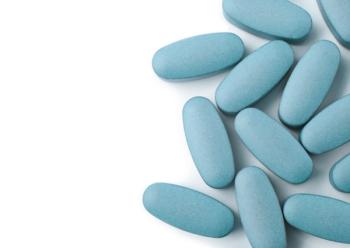
Dysphoric Milk Ejection Reflex: What Is the Diagnosis?
Key Takeaways
- D-MER is characterized by brief dysphoric episodes during milk let-down, distinct from postpartum depression due to the absence of persistent depressive symptoms.
- The condition is likely neuroendocrine, with mechanisms not fully understood, and varies in emotional and physical intensity among individuals.
Dysphoric milk ejection reflex (D-MER) causes brief emotional distress during breastfeeding, often misdiagnosed as postpartum depression, requiring better awareness and support.
Psychiatrists are familiar with numerous disorders that are characterized by short-lived, discrete changes in affective state: panic attacks, migrainous phenomena, focal seizures, the flashbacks of posttraumatic stress disorder, spiking anxiety associated with a pheochromocytoma crisis, and more. Recently, another episodic condition has been identified: dysphoric milk ejection reflex (D-MER). D-MER is not well known to most physicians, although it is quite common and easy to diagnose by history.
Consider this case example: “Tanya” (a composite of several patients) consults a psychiatrist because she has been having “intense feelings” that have troubled her since the birth of her second child:
“I get these waves of sadness and despair. It feels like…someone I love just died. I’m emotionally crushed. But, thankfully, these feelings only last for… maybe 5 minutes or so. Otherwise, I’m fine. The feelings only come on when I nurse or pump breast milk. The problem is that now I dread nursing. This is horrible for me. I loved nursing my first baby.”
A psychiatrist reader’s first thought might be that Tanya has postpartum depression. This is the most common misdiagnosis that patients with D-MER receive. However, individuals with D-MER are not depressed between episodes, and this readily distinguishes D-MER from postpartum depression.
Also, the timeline of Tanya’s sadness and despair does not fit the picture of any DSM depressive disorder. With this realization, a reader might consider a psychodynamic formulation such as difficulty bonding with the second child. As an etiology of Tanya’s symptoms, however, this explanation is also incorrect. D-MER is not caused by psychological dynamics.
The very short-lived dysphoric episodes of D-MER are only associated with milk let-down. The intensity of emotional distress varies from individual to individual, and some women also experience physical sensations such as nausea or a hollow feeling in the pit of the stomach. While the precise mechanisms that lead to the symptoms of D-MER are poorly understood, the changes in affective state are clearly linked to the release of milk into the nipples. In all likelihood, D-MER is a neuroendocrine condition.
The downstream emotional effects of having D-MER may be significant and can complicate the presenting picture. Given that dysphoria is paired with milk let-down, conflicted feelings about nursing frequently arise. Women with D-MER are generally puzzled about what is the matter; they may worry that something is wrong with them, perhaps making them inadequate to nourish their babies. D-MER can contribute to a lack of confidence as a mother, especially given that most mothers of infants are already at a vulnerable time in their lives, adapting physically, emotionally, and socially to having a new baby.
Some women with D-MER will seek out care from a psychiatrist, a pediatrician, or an obstetrician. Providing accurate information about D-MER is the most helpful intervention—along with nonjudgmental emotional support—to aid the nursing mother in making her own decision about whether to continue nursing or to wean.
Unfortunately, many health care professionals are not familiar with D-MER even though this condition is not rare. A 2019 epidemiologic study found a 9.1% incidence through a chart review of 164 women who were seen for 6 to 8 week postpartum visits in a military clinic.1
Early reports about this condition appeared in publications for lactation support professionals and midwives. The first articles in the medical literature were case reports, one being that of Alia A. Heise—a breastfeeding counsellor who coined the term D-MER to describe her own condition.2 She then established a D-MER website and Facebook group. These online resources, as well as others that have emerged with time, have been widely utilized. Many women, confused by their experiences and finding their health care professionals to be unfamiliar with their symptom presentation, have looked to the internet for an explanation. Many have discovered Heise’s website and a growing, informative, and supportive online D-MER community.
To date, D-MER remains poorly understood. The underlying neuroendocrine mechanisms are unknown, and there are no evidence based treatment options. Also, D-MER might be an unrecognized contributing factor to the current, lower than recommended rates of nursing in the United States. Approximately 17% of new mothers do not breastfeed at all, and, for those who do, the rate drops to 56% in the first 6 months and then to 36% by 1 year.3
PubMed statistics show that only 1 paper was published in the medical literature on D-MER in each year 2010, 2011, 2017, 2018, 2019, and 2021. In 2023, only 5 articles appeared.
In 2024, 12 papers were published, including the Harvard Review of Psychiatry’s “Dysphoric Milk Ejection Reflex (D-MER): A Novel Neuroendocrine Condition with Psychiatric Manifestations,” authored by the Neuropsychiatry Committee of the Group for Advancement in Psychiatry (GAP).4 The GAP paper discusses D-MER with psychiatrist readers in mind.
The growing attention to D-MER in the medical literature is encouraging. More research on D-MER is needed; indeed, human lactation is extraordinarily complex and still incompletely understood. Nonetheless, clinicians do now have a way to help patients who are experiencing the troubling symptoms of D-MER—by providing them with accurate information. To this end, more physicians need to be knowledgeable about D-MER.
This article was approved by the Group for Advancement of Psychiatry Publications Board.
Dr Schildkrout is chair of the Neuropsychiatry Committee of the Group for Advancement of Psychiatry. She is an assistant professor of psychiatry, part-time, at Harvard Medical School in the Department of Psychiatry at Brigham and Women’s Hospital. She is the author of two books and numerous journal articles. Her writing also can be found on the Substack newsletter, Two Friends Talk about Writing and the Brain, and the Psychology Today blog, The Clinical Picture.
Acknowledgments: Thank-you to Margo Lauterbach, MD, and Lindsey MacGillivray, MD, PhD, for their input on this article.
References
1. Ureño TL, Berry-Cabán CS, Adams A, et al.
2. Heise AM, Wiessinger D.
3. 2022 breastfeeding report card. Centers for Disease Control and Prevention. May 10, 2025. Accessed July 29, 2025.
4. Schildkrout B, MacGillivray L, Raj S, et al.
Newsletter
Receive trusted psychiatric news, expert analysis, and clinical insights — subscribe today to support your practice and your patients.

















